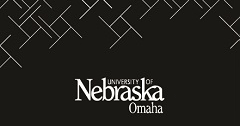Date of Award
8-1-2003
Document Type
Thesis
Degree Name
Master of Science (MS)
Department
Computer Science
First Advisor
Dr. Hesham Ali
Abstract
Motivation: Many modeling frameworks have been applied to infer regulatory networks from gene expression data sets. Linear Additive Models (LAMs), as one large category of models, have been gaining more and more popularity. One problem associated with this kind of models is that the system is often under-determined because of excessive number of unknown parameters. In addition, the practical utility of these models has remained unclear. Methods: Based on LAMs, we developed an improved method to infer gene regulatory networks from time-series gene expression data sets. The method includes an incremental connectivity model with indexed regulatory elements and a linear time complexity fitting algorithm embedded with genetic algorithm. Comparing to previous LAMs, where a fully connected model is used, the new technique reduces the number of parameters by O(N), therefore increasing the chance of recovering the underlying regulatory network. The fitting algorithm increment the connectivity during the fitting process until a satisfactory fit is obtained. Results: We performed a systematic study to explore the data mining availability of LAMs. A guideline to use LAMs is provided: If the system is small (3-20 elements), more than 90% regulation pathways can be correctly determined. For a large scale system, either a clustering is needed or it is necessary to integrate other information besides expression profile only. Coupled with clustering method, we applied our method to Rat Central Nervous System development (CNS) data with 112 genes. We were able to efficiently generate regulatory networks with statistically significant pathways which have been previously predicted.
Recommended Citation
Deng, Xutao, "A Computational Approach to Reconstructing Gene Regulatory Networks." (2003). Student Work. 3303.
https://digitalcommons.unomaha.edu/studentwork/3303
Files over 3MB may be slow to open. For best results, right-click and select "save as..."

Comments
A Thesis Presented to the Department of Computer Science and the Faculty of the Graduate College University of Nebraska In Partial Fulfillment of the Requirements for the Degree Master of Science University of Nebraska at Omaha. Copyright 2003 Xutao Deng.